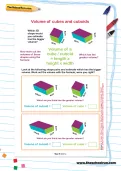Important update from TheSchoolRun
For the past 13 years, TheSchoolRun has been run by a small team of mums working from home, dedicated to providing quality educational resources to primary school parents. Unfortunately, rising supplier costs and falling revenue have made it impossible for us to continue operating, and we’ve had to make the difficult decision to close. The good news: We’ve arranged for another educational provider to take over many of our resources. These will be hosted on a new portal, where the content will be updated and expanded to support your child’s learning.
What this means for subscribers:
- Your subscription is still active, and for now, you can keep using the website as normal — just log in with your usual details to access all our articles and resources*.
- In a few months, all resources will move to the new portal. You’ll continue to have access there until your subscription ends. We’ll send you full details nearer the time.
- As a thank you for your support, we’ll also be sending you 16 primary school eBooks (worth £108.84) to download and keep.
A few changes to be aware of:
- The Learning Journey weekly email has ended, but your child’s plan will still be updated on your dashboard each Monday. Just log in to see the recommended worksheets.
- The 11+ weekly emails have now ended. We sent you all the remaining emails in the series at the end of March — please check your inbox (and spam folder) if you haven’t seen them. You can also follow the full programme here: 11+ Learning Journey.
If you have any questions, please contact us at [email protected]. Thank you for being part of our journey it’s been a privilege to support your family’s learning.
*If you need to reset your password, it will still work as usual. Please check your spam folder if the reset email doesn’t appear in your inbox.
Your guide to choosing a secondary school

If your child is now in Year 6, it’s time to start thinking about what secondary school they’ll go to. Talk to your child's teacher and ask about what sort of help the school provides and what information you can expect to receive from the local education authority (LEA).
Information gathering
Visits
Find out what ‘taster’ visits are organised by local schools. These are opportunities for children to visit during school hours and spend time as pupils. Encourage your child to attend as many as possible.


Start the Year 6 Learning Programme!
- Weekly maths, science & English worksheets direct to your inbox
- Follows the National Curriculum
- Keeps your child's learning on track
Open evenings
Most schools will also hold open evenings for you to look around the school and talk to teachers and current pupils. You will be able to find out information about facilities, uniform and lunches, as well as see mini lessons.
Virtual tours
To get the best from a virtual open evening, do a bit of planning first. ‘Take the time to sit down with your child and go through the tours together, and make a note of any questions so you can follow up afterwards,’ suggests Sarah West, marketing and communications manager of Parentkind, the UK’s leading PTA membership organisation. ‘One advantage of video tours is that you can watch them again to go back to areas of importance or interest.’
When you’re watching, try to focus on the most important elements like values, subject choices and facilities, rather than being seduced by amazing production techniques that not all schools will be capable of.
Other sources of information
- School prospectuses: Get these from each school you are interested in. They provide lots of information about the school and how to apply.
- School website and social meda: A school’s website is designed to showcase its ethos and values, so spend some time exploring it, with and without your child. As well as looking at elements like admissions details, prospectus and photo gallery, delve a bit deeper and see what in-depth information you can find out from things like its homework and anti-bullying policies. Newsletters are often published, too, so you can get a snapshot of what’s happening in the school.
- LEA booklets: These list schools in your area and give information, such as the size of each school.
- Ofsted inspection reports: As well as getting an overall feel for a school, you’ll want to look at how well it performs by looking at its most recent Ofsted report, its position in league tables, performance measures like its Progress 8 score (a measure of progress from Year 7 to Year 11), its GCSE results and its post-16 destinations. All of this information will be available on the school website.
- Performance tables: The Government publishes tables every year that give information about GCSEs and other exam results, absenteeism and other key facts.
- Other parents: Few people know more about a school than its students and their parents, which makes them a mine of information about what it’s really like to be part of the school community.
You may already know families who have children at your child’s prospective schools, and they’re likely to be happy to share their views. Consider ways of linking current students with your child and their peers, for example in a private Zoom meeting or WhatsApp group, so they can ask their own questions. You can also ask opinions from people in the wider community.
‘You could ask questions on local online forums or Facebook groups,’ suggests Melanie Sanderson, managing editor of the Good Schools Guide.
‘You’ll inevitably encounter different opinions – a school that’s great for one child might not be a good fit for another – but go into it with your eyes open and some good questions, be wary of parents’ grudges, and you’ll probably be glad you asked around,’ says Melanie.
Important things to consider when choosing a secondary school
- What does your child think and where are their friends going?
- Bear in mind that reputations, both good and bad, can often ‘stick’ for a long time and may not tell the whole truth about the school now.
- If you are particularly impressed by the headteacher check whether the school is already aware of any changes in headship in the near future.
- Just because other children do well at a school it doesn’t mean that your child will be happy there. Be honest about the type of school in which you believe they may do best.
- If your child has special educational needs, find out what’s offered in terms of SEN provision.
- Does your child have a particular interest, for example, music. If so, is this a strength in the school?
- How will your child travel to the school? Homework and other responsibilities increase greatly at secondary school and a difficult journey can be extremely tiring. On the other hand, travelling to school can be an opportunity to develop confidence, so don’t immediately be put off by a bus or train journey.
Applications – when and how
Many local education authorities now encourage parents to apply for their child's school online. You will usually be able to select up to six schools, in preference order. It’s a good idea to apply for more than one in case your first choice is oversubscribed.
You’ll be given information about how to apply from your school at the end of Year 5 or the beginning of Year 6. You should make a careful note of the application deadline. You’ll finally be told about the place your child has been offered at the beginning of March.
Still got questions? You won’t be the only one, and schools should be happy to provide answers.
‘Your first port of call should be the director of admissions or registrar,’ says Melanie. ‘Every school will have someone in this role, even if their job title is different, and if they can’t answer your question themselves, they should be able to find someone else who can.’








